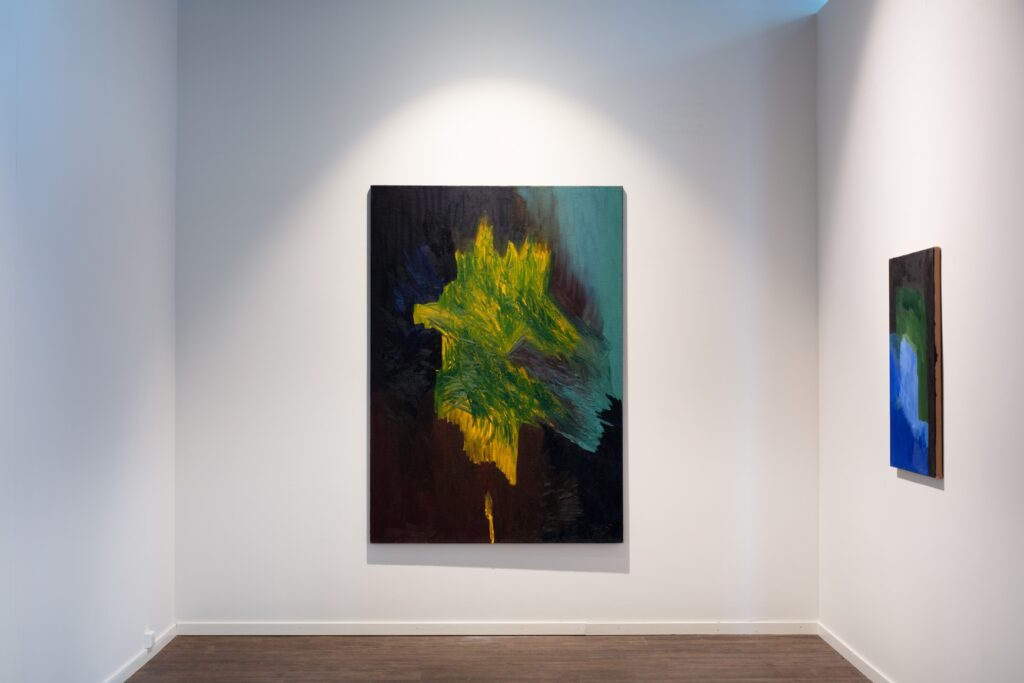The exhibition consists of paintings created on various durable textiles, such as industrial curtains and furniture textiles. The structure and texture of the textile influences, and almost dictates, the way the paint is applied, how it behaves and dries. Because the textiles are originally intended other purposes, working with these materials creates a direct link to the environments that we belong to.
Most of the paintings in Marrow are made in a fast pace: in the preparation and planning of a painting, Wyller creates a large number of sketches. The sketches are the vocabulary or skeleton that, when painting, she relies upon. Her new body of works is, therefore the marrow of these sketches. Marrow; the substance that our blood grows and flows from.
The paintings shown in Marrow are more expressive than Wyller’s earlier works: they are darker in colour and form; they gravitate towards associations that are slightly sinister or somber. They display a vibrant process: showing movement, form and place as one singular surface of motifs gesturing towards sensations and experiences, influenced by the winter and the vacuum it creates.
Throughout her artistic practice Wyller is inspired by newer theories and thoughts from process philosophy; the idea that subjects and things are not isolated individuals and matter moving through an environment as a backdrop. Objects, bodies, and their environment influence each other, they are changing, moving, transforming, such as marrow of the bone itself. We only know of our existence, and we exist solely because of our relations with environments and others. The knowledge obtained regarding such relations is more often subtle if not intuitive.
Wyller’s paintings are therefore non-figurative and solely based on the rhythm and movement of form, colour and brushstroke. The background and foreground are a part of the same field as they slip and overlap each other, making it look and feel both spatial and flat simultaneously. Apparent in her works is the artist’s fascination with relational transitions, between things and milieus, especially in relation to the natural world. This is what her paintings embodies at their core, natural transition and movement.
Gallery name: Galleri Brandstrup
Address: Tjuvholmen allé 5, oslo
Opening hours: Tue-Fri 12:00 - 17:00, Sat 12:00 - 16:00
Open: 03.06.2021 - 25.06.2021







